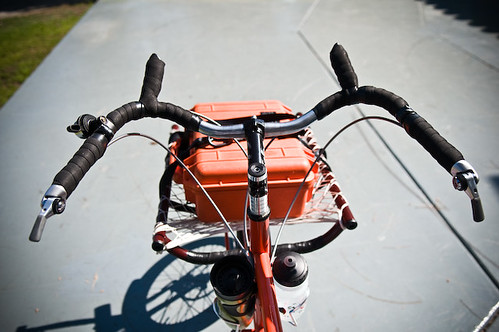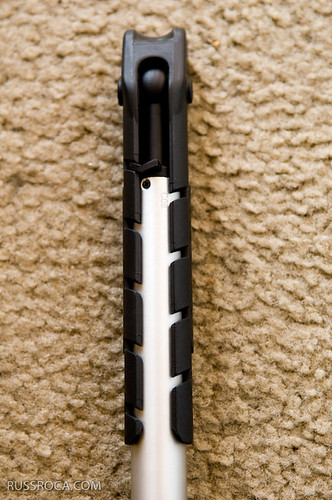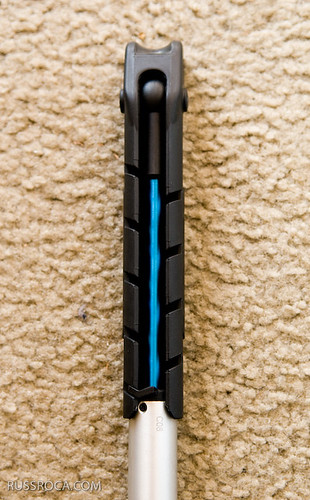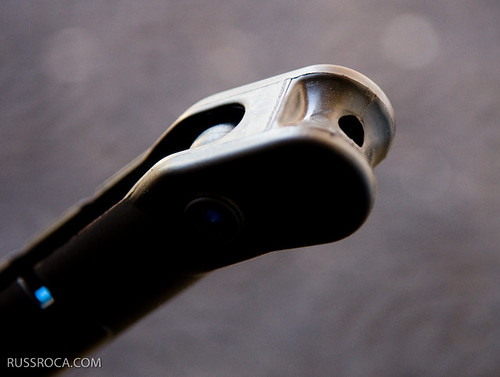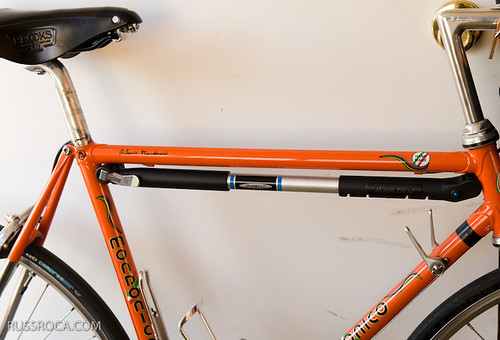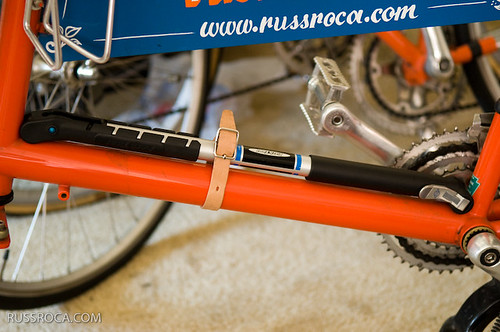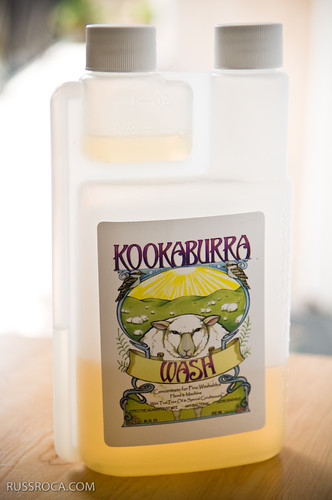I believe that for most men, shaving is probably a morning ritual that is endured rather than enjoyed. You wake-up (or half wake-up), spray on some strange gel or magic expanding white cloud on to your face and then drag an over-priced disposable razor that is no longer sharp across your mug.
Barbaric.
About a year ago, I went to buy some blades for my Mach 3 and saw the price tag and absolutely refused on principal as a sane and capable person to pay the kings ransom for the blades. There has to be a better way, I thought.
So that thinking led me down a strange journey into the world of "wet shaving." It's "wet", because unlike that magic goo in a bottle that doesn't really lubricate, "wet" shaving is based around using a brush, shaving soap and water. The advantages of wet shaving are many, for one you do get a CLOSER shave and it is much cheaper in the long run. For example, I recently ran out of a tub of $10 shaving cream (The Body Shop makes a great men's shaving cream!) that lasted me nearly four months. It didn't use an aerosol or require any strange space-age application device and the plastic tub is recyclable!
The other component of wet shaving (other than the wet and foamy part) is the shaving tool Many wet shavers use straight razors. Imagine that, a razor that you buy ONCE that will last you your entire lifetime with proper care! For about $200 you can get a straight razor, razor strop, soap, brush and sharpening stone. Everything you need for a lifetime of shaving, minus more soap ($10 every four months).
Wet Shaving while on TourI don't mean this to be a treatise on wet shaving, but some background was needed. When I'm home, I usually go the whole nine yards with the brush, soap, razor, shaving bowl and all the other accoutrements.
When I'm on tour, I still like to treat myself to a nice straight razor shave every third or fourth day. I have found this kit to be the most optimal for my needs.
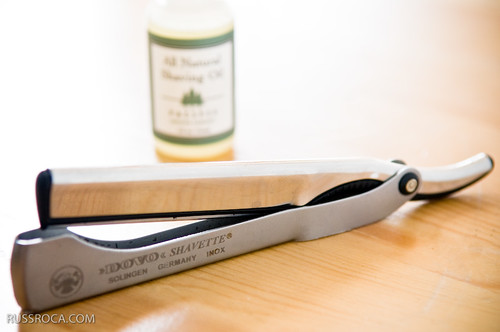
Pictured above are a
Dovo Shavette and a 1/2 oz bottle of
Pacific Shave Oil.
The Dovo Shavette is essentially a folding blade holder that functions like a straight razor but holds disposable razor blades (not the over-priced ones, but the
old school ones that you snap in half). For $7.99 you can get a pack of 10 blades that you snap in half giving you 20 edges ($.40/usable blade). The blades are longer than usual so it's closer in length to a real straight razor. Each edge, for me, lasts about 3 weeks of shaving.
With proper technique and good lubrication, you can get as close a shave as with any $500 straight razor.
Which leads me to the curious bottle of
Pacific Shave Oil. The packaging boasts that five drops is all you need for a shave and let me tell you it isn't bullshitting. This stuff is amazing! I tend to use five drops per pass (in wet shaving you shave in "passes" - pass one is with the grain, pass two is across the grain, pass three is against the grain). Pacific Shave Oil will let you shave closer than any can of goo will.
Typically, I build up a lather in a bowl with a brush at home, but with Pacific Shave Oil you don't have to. Just wet your face and rub it in. Honestly, I'm a bit of a sucker for the process of building the lather, but if somehow tomorrow all the shave soaps disappeared, all the wet shavers could still get by with Pacific Shave Oil.
So that is my wet shaving kit for on the road.
Of course, this probably isn't for everybody, but if you're a wet-shaver and bicycle tourist, this is a good combination.


